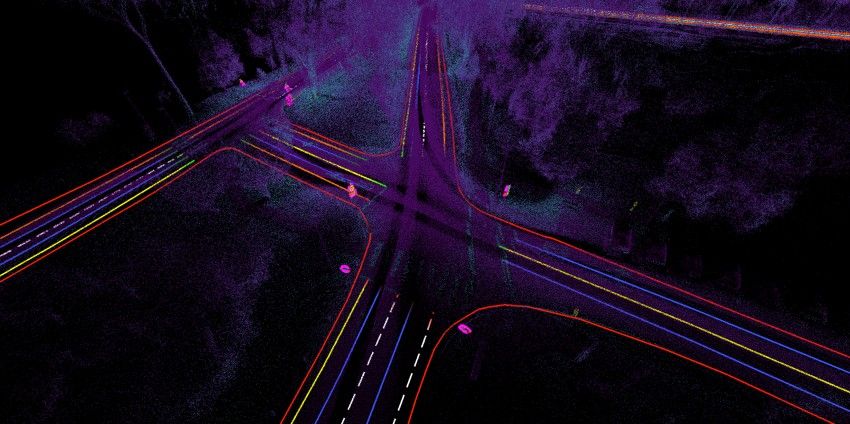
“Driving cars on the road might be the best way to create maps for tomorrow’s autonomous ones.”

“Driving cars on the road might be the best way to create maps for tomorrow’s autonomous ones.”
Quantum computing 101 — lesson 1: quantum models
Before reviewing in more detail the most promising experimental realisations of quantum information processors, I think it is useful to recap the basic concepts and most used models of quantum computing. In particular, the models, as the physical realisations mentioned in a previous post use different but equivalent computational models, which need to be understood to comprehend their implementations.
Since QUESS has been online, China has been able to deliver the 1st set of programmable code, transmit communications back-and-forth from the satellite, and now they have been able to expand the memory capacity up to 100 Qubits. These are pretty big steps since the satellite has been in orbit on Tuesday.
BTW — the 1st 2 events are directly a result of QUESS; the 3rd advancement isn’t the result of QUESS and resulted after QUESS’ launch.
Although Chinese scientists said there is still a long way to go before any ultrapowerful machine can be developed, progress has been made in terms of quantum memory technology, which is a key component to quantum computing and quantum communication.
On Tuesday, China launched the world’s first quantum experimental satellite in an attempt to build a space-based quantum communication network.
Posted in biotech/medical, cyborgs, transhumanism
Motherboard visits a woman using one of the most advanced prosthetic limbs in the world—one that can touch and feel like a flesh-and-blood hand. Full video: http://bit.ly/2b6JS9W
Spaceflight venture Moon Express wants to be the first private company ever to land on the Moon in 2017 — and now the company has been granted approval by the United States government to launch to the lunar surface. It’s the first time the government has granted regulatory approval for a private mission beyond Earth orbit. And Moon Express came very close to being denied permission to go.
No regulatory framework currently exists for a commercial space missions to another world. Lawmakers are working on a permanent solution, but it likely won’t be ready in time for Moon Express’ 2017 mission. So the company came up with its own temporary framework — a regulatory patch — that the US government could use to oversee the company’s mission. And after a meeting between the Federal Aviation Administration, the White House, and the State Department, Moon Express has been given the approval it needs to launch to the Moon.
So far, commercial companies have mostly just launched satellites into space; all specialized private missions, like launching cargo to the space station, have been overseen by NASA. That means Moon Express could be the first private company to land on the Moon, as well as the company that travels the farthest away from our planet.
Audi has designed an active suspension system called eROT, which allows the electromechanical dampers to store the energy from bumps and potholes for use in the car. It also makes the ride far smoother, adapting the car to the road.
The automotive industry’s ‘green revolution’ hopes to make electric vehicles far more efficient. Every bit of force under the hood should be used to its maximum potential. That why you have concepts such as regenerative braking, which return some of the energy used in braking back into the system.
But Audi is looking at tapping another roadway staple: potholes. It has created a system called eROT, an active suspension system that stores the energy when a driver hit potholes, bumps, and other forces that induce kinetic energy on a car.
The environmental group, WWF Scotland, confirmed that on August 7, 2016, wind power alone generated 106% of Scotland’s electricity needs for the single day. This shows that with more development, renewables are capable of eventually replacing fossil fuels.
We have been harnessing the wind’s energy for hundreds of years. Traditionally, it has been used to pump water or grind grains with the help of windmills. But recently, windmill’s modern equivalent, the wind turbine, has just achieved an incredible feat—generating 106% of an entire nation’s electricity needs in just one day.
Data analysis from the environmental group, WWF Scotland, has confirmed that on August 7, 2016, wind turbines in Scotland pumped 39,545 megawatt-hours (MWh) of electricity into the National Grid, while the nation’s total consumption stood at 37,202 MWh—which was 2,000 MWh over than what the nation consumed.
Computadores poderão, em breve, adivinhar o que as pessoas estão pensando. Pesquisadores da Universidade de Oregon desenvolveram um sistema capaz de prever frases não ditas somente ao analisar a atividade do cérebro. Em testes a precisão em “adivinhar” os pensamentos foi de 70%.
Os pesquisadores usaram varreduras do cérebro feitas através de resson ncia magnética em 14 participantes, enquanto eles faziam a leitura silenciosa de 240 frases diferentes. Depois disso, os cientistas usaram um sistema para procurar padrões neurais associados a determinadas palavras.
Assim, eles criaram uma espécie de dicionário, conseguindo identificar através do cérebro o uso de determinadas palavras. Mais tarde, foi possível recombinar os padrões de atividade de palavras individuais para prever novas frases construídas com elas.
Posted in biotech/medical
SENS RB2016 Conference is now live streaming come along and join them now and get the latest news! They are streaming for the next 3 days for those interesting in rejuvenation biotechnology.
All presentations at the Rejuvenation Biotechnology Conference 2016 will be available to watch online via live streaming. There will be three separate streams, covering consecutive sections of the conference.
To access the streams bookmark the following links and tune in during the times specified: